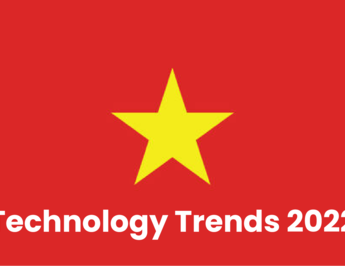
Despite the uncertainty of these newer trends, it’s apparent that industries are broadly exposed to changes resulting from technological innovation and the diffusion of new technology enabled business practices.
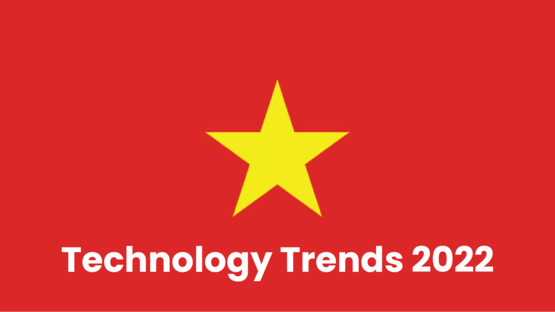
Despite the uncertainty of these newer trends, it’s apparent that industries are broadly exposed to changes resulting from technological innovation and the diffusion of new technology enabled business practices. We plan to explore the effects that technology trends are having, and could have, on sectors in more depth over the coming months.
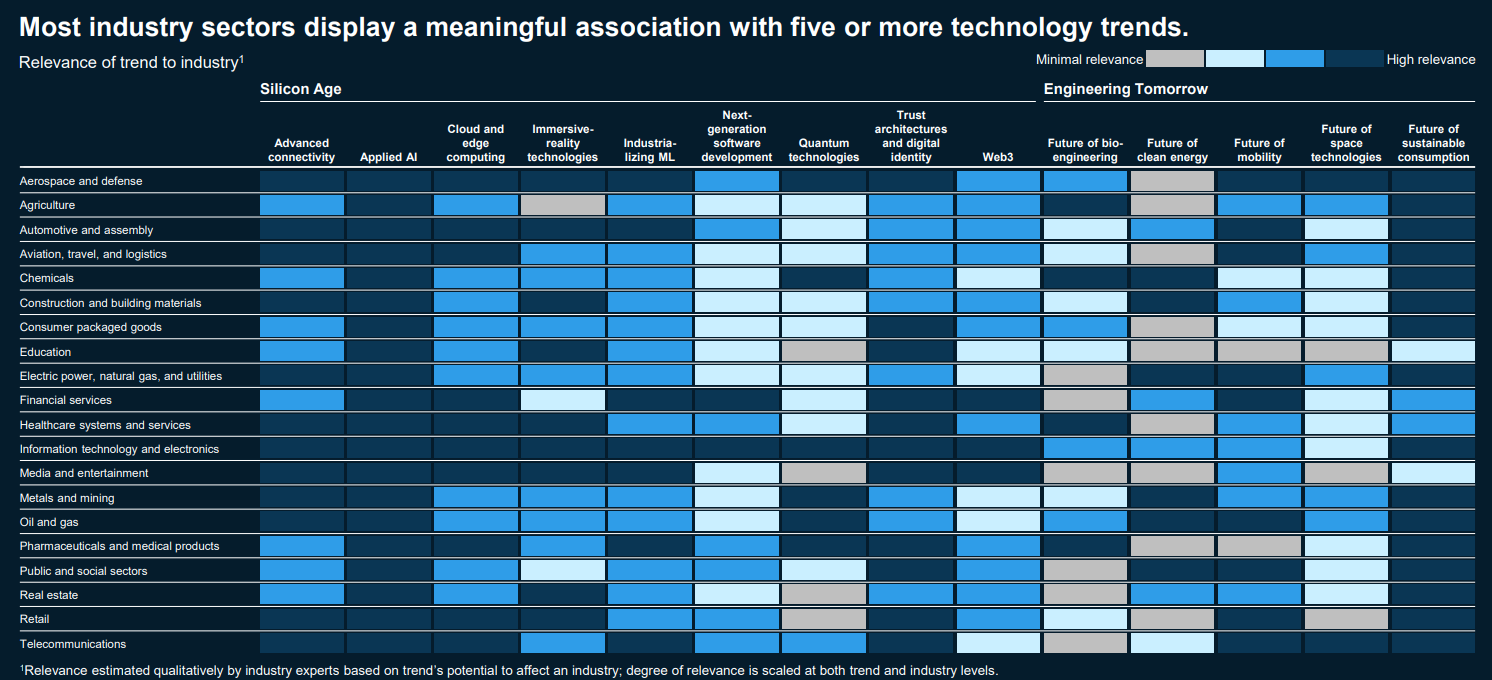
When we looked at how frequently news reports mentioned companies in 20 sectors alongside different trends, we found that most of these sectors display a meaningful association with five or more trends. The mature and sustainability-focused trends exhibit a close connection with multiple industries. Several nascent trends also show a moderately close connection with many industries. Overall, we see that press coverage connects the automotive, manufacturing, telecommunications, and technology sectors closely to at least one trend and moderately to several others.
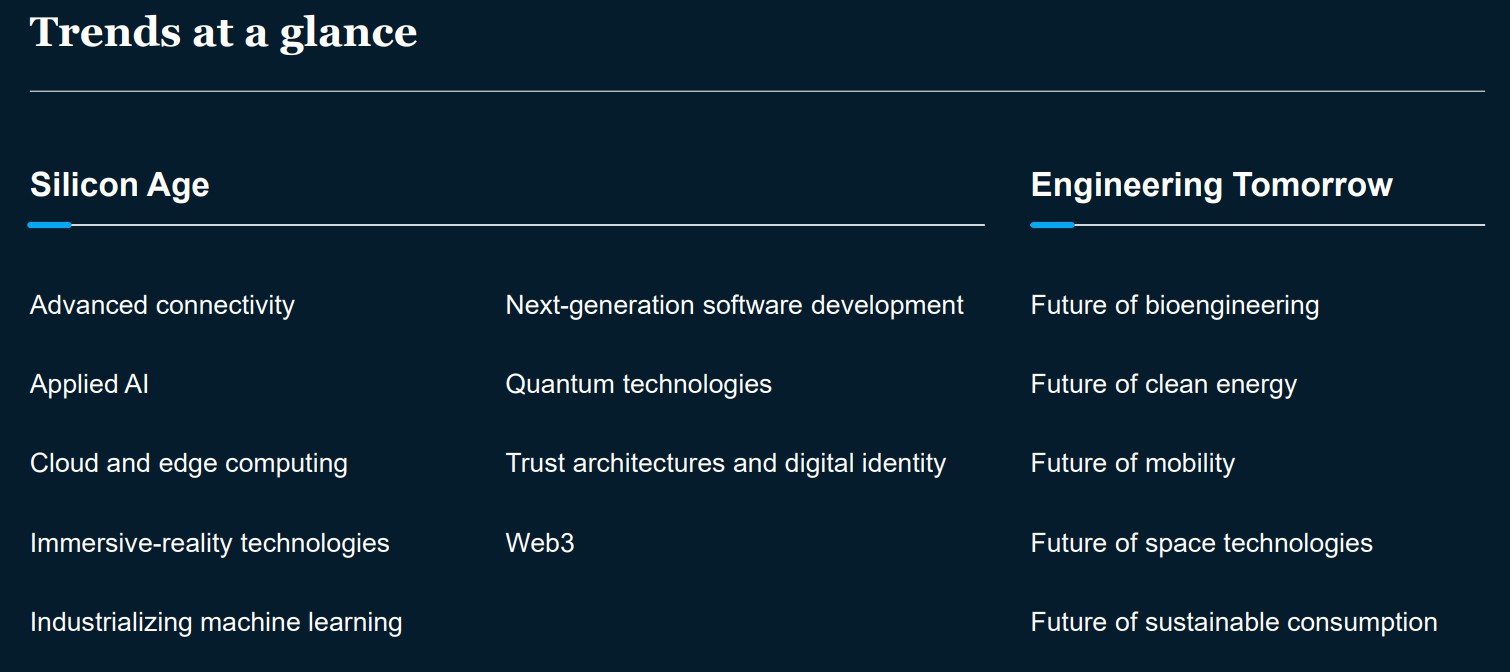
Networks of the future consist of traditional cloud data centers and a variety of computational resources located at network edge nodes closer to end users to reap the benefits of traditional cloud computing while gaining advantages such as better data latency and increased data autonomy. Cloud has already effected change across industries and will remain an important tech disruption.

Cloud and edge computing
Most mature immersive-reality solutions fall under a few key themes. Global immersive reality market size is expected to grow at a CAGR of ~24% until 2035, facilitated by several factors, including increased use of smartphones and connected devices and rising adoption of 5G networks. Moreover, the world’s 2.7 billion deskless workers, representing ~80% of the global workforce, are concentrated in 8 industries and present huge potential for scaling immersive-reality technology.
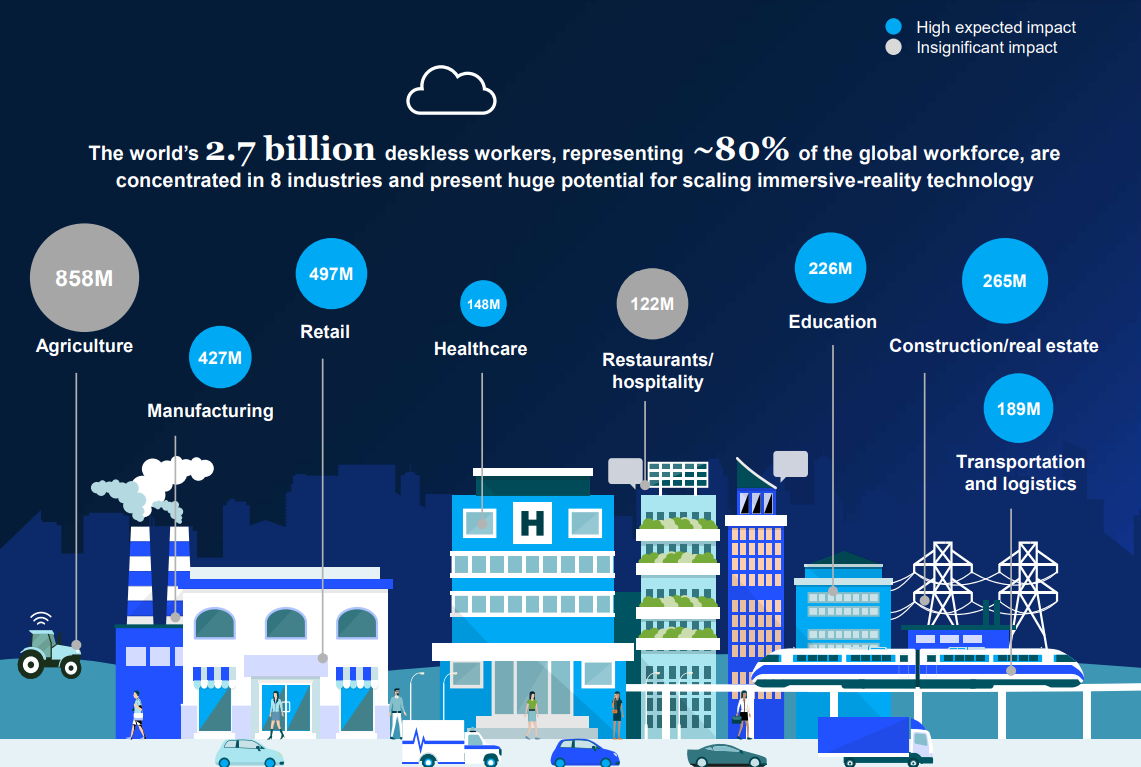
Immersive-reality technologies
Machine learning (ML) workflows are the processes that bring AI and ML into production for real-world business use. Solutions industrializing ML provide the software and hardware technologies to scale ML workflows and ease the development and deployment of ML for organizations. Industrializing ML has potential for impact on all industries by reducing hurdles to develop ML in a reliable manner.
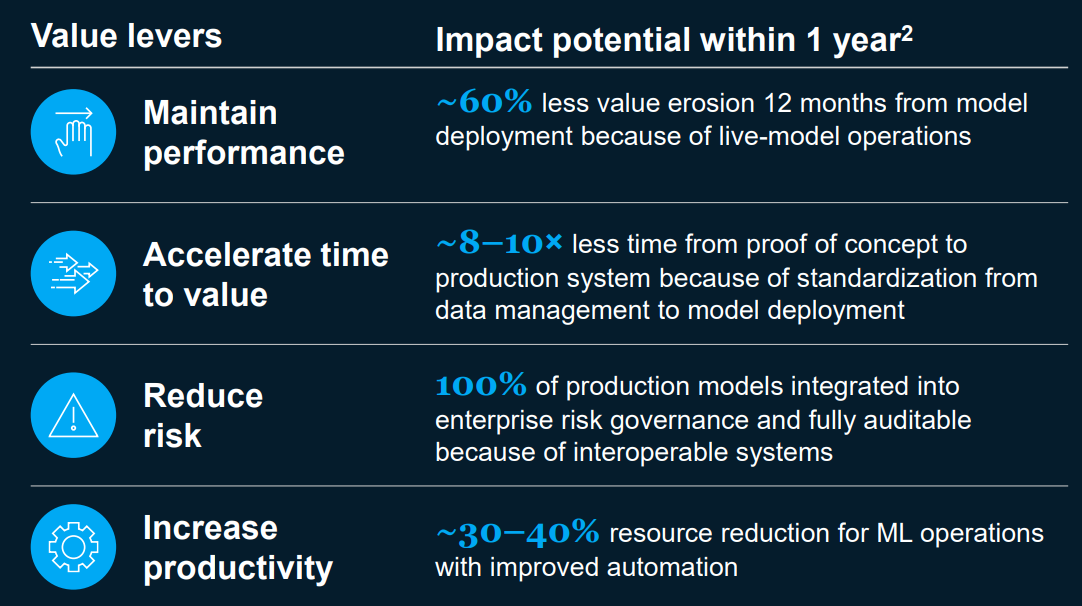
Industrializing machine learning
The next generation of software development involves tooling that aids in the development of software applications, improving processes and software quality across each stage of the software development life cycle, including AI-enabled development and testing, as well as low-code/no-code tools.

Next-generation software development
Quantum technology has been around for a long time, but a few emerging technologies merit our focus now. These futuristic technologies aspire to change our computational, networking, and sensory infrastructure in the coming decades, unlocking use cases and capabilities previously unimaginable.
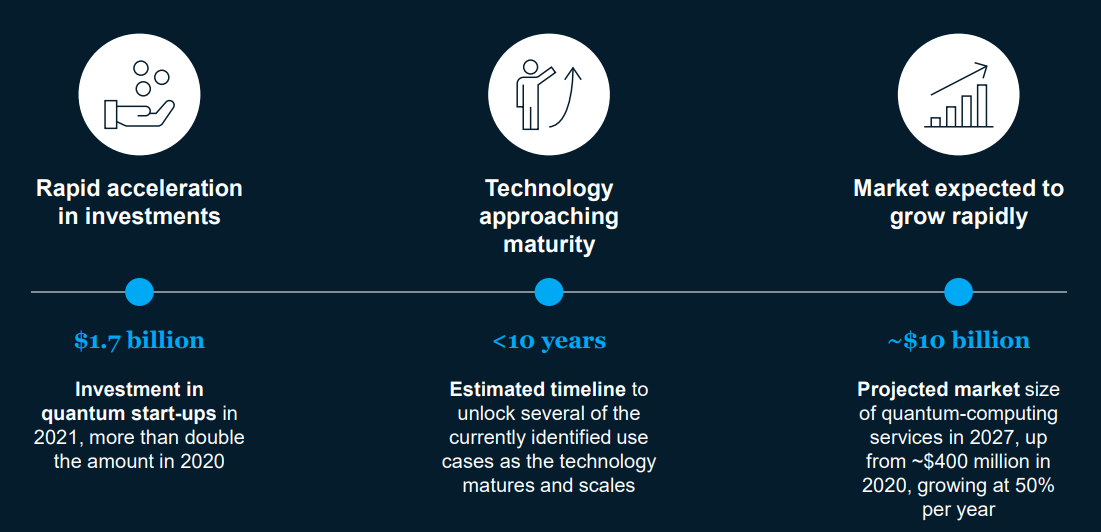
Quantum technologies
Increasing cyberattacks and data breaches continually pose new challenges by leveraging trending technology. Digital-trust technologies empower organizations to gain a competitive advantage by building, scaling, and maintaining the trust of stakeholders in the use of their data and digital-enabled products and services.
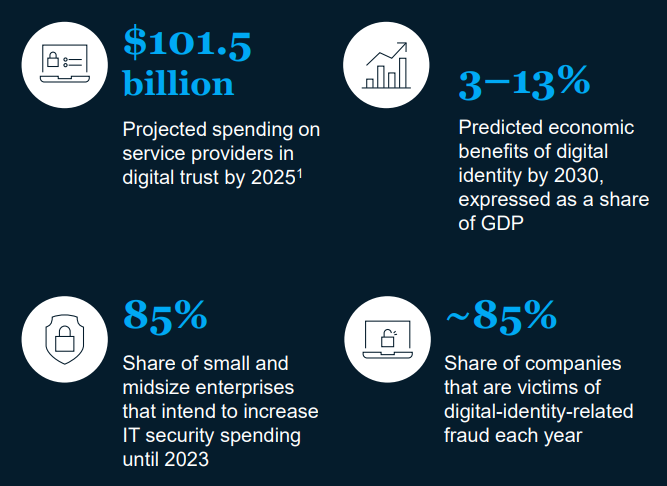
Trust architectures and digital identity
Web3 includes platforms and applications that enable shifts toward a future, decentralized internet with open standards and protocols while protecting digital ownership rights, providing users greater data ownership and control over how their data is monetized, and catalyzing new business models. Talent and investment have rapidly increased in the past year, with continued expectations of long-term growth.
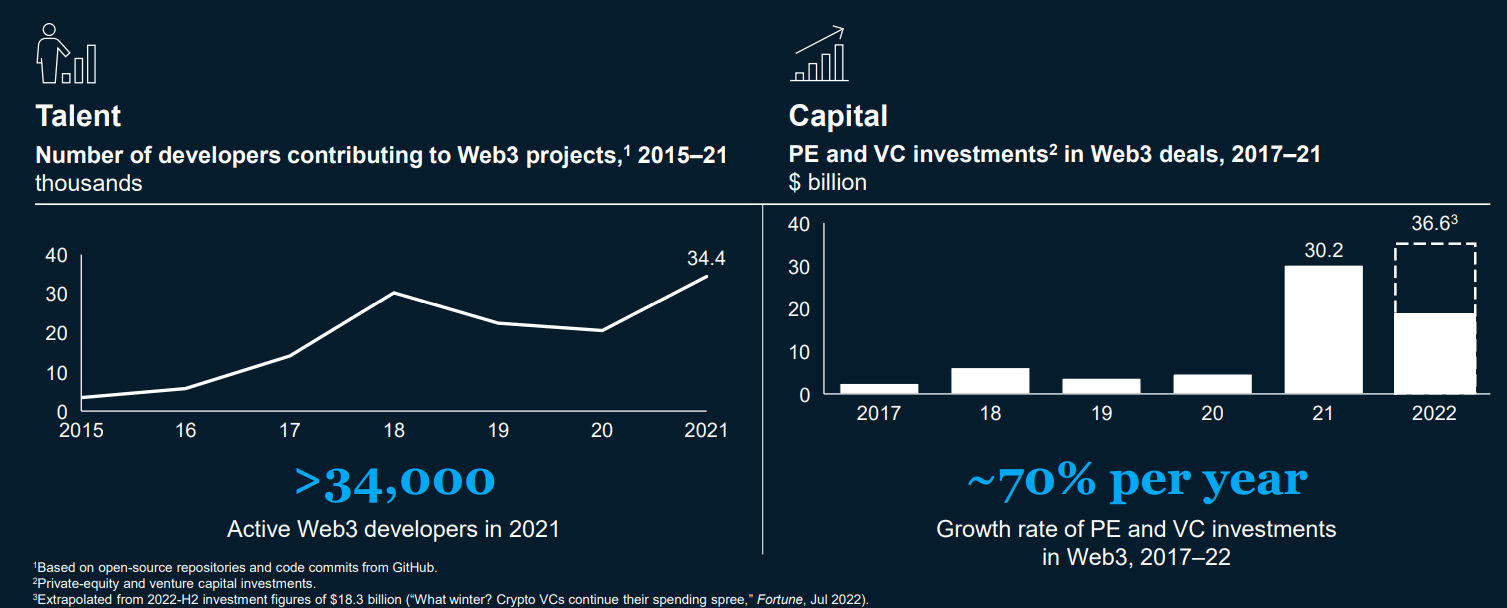
Web3
From the cellular level to complex living systems, the future of bioengineering reflects the convergence of biological and information technologies to transform business and society. It is defined by 4 arenas: biomolecules, biosystems, biomachine interfaces, and biocomputing; in recent years, biomolecules and biosystems have experienced widespread developments.
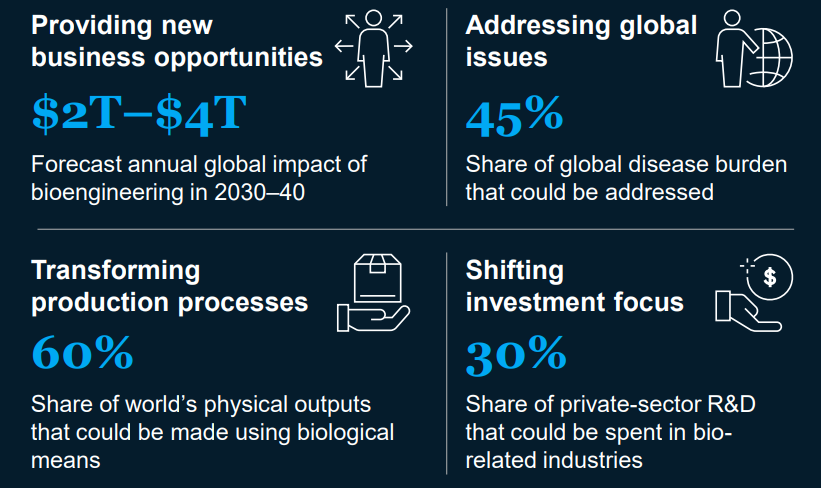
Future of bioengineering
The clean-energy future is a trend toward energy solutions that help achieve net-zero emissions across the energy value chain, from power generation or production to storage to distribution. About 84% of global power demand, which is estimated to grow 3× by 2050, can be met using renewable energy.

Future of clean energy
Mobility is undergoing its “second great inflection point”—a shift toward autonomous, connected, electric, and smart (ACES) technologies. This shift promises to disrupt markets while improving efficiency and sustainability of land and air transportation of people and goods.

Future of mobility
At a macro level, sustainability is no longer optional: 90% emission reduction paired with emission removal is needed to avoid an environmental crisis, creating a $4 trillion–$6 trillion addressable market focused on industrial and individual end use by 2030.

Future of sustainable consumption
We expect changes like these will accelerate and intensify in the years to come, much as they have during the roughly three decades since the start of the internet revolution. The changes will not only alter the competitive landscape but also exert evermore powerful effects on society: reshaping markets, boosting productivity, spurring economic growth, and enhancing lives and livelihoods.
Source: McKinsey